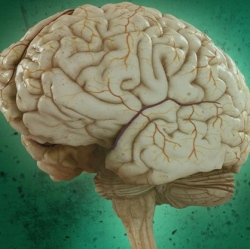
The “sense of numbers” theory suggests people are born with an innate ability to recognize quantities, and that this ability improves with age. Early math curricula and tools for diagnosing math learning disabilities such as dyscalculia, a brain disorder that makes it hard to make sense of numbers, have been based on the theory.
Other theories suggest that a “sense of magnitude” that enables people to discriminate between different “continuous magnitudes,” such as the density of two groups of apples or total surface area of two pizza trays, is even more basic and automatic than a sense of numbers.
The new study, published in the Behavioral and Brain Sciences journal, combines these approaches. The researchers argue that understanding the relationship between size and number is what’s critical for the development of higher math abilities. By combining number and size (e.g., area, density, and perimeter), we can make faster and more efficient decisions.
For example: how do you choose the quickest checkout line at the grocery store? While most people intuitively get behind someone with a less filled-looking cart, a fuller-looking cart with fewer, larger items may actually be quicker. The way we make these kinds of decisions reveals that people use the natural correlation between number and continuous magnitudes to compare options, not just numbers.
Other factors, such as language and cognitive control, also play a role in acquiring numerical concepts, they note.
“This new approach will allow us to develop diagnostic tools that do not require any formal math knowledge, thus allowing diagnosis and treatment of dyscalculia before school age,” says Tali Leibovich, PhD, from University of Western Ontario, who led the study.
“If we are able to understand how the brain learns math, and how it understands numbers and more complex math concepts that shape the world we live in, we will be able to teach math in a more intuitive and enjoyable way,” says Leibovich.
